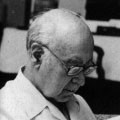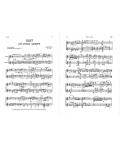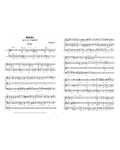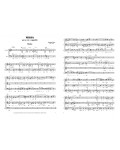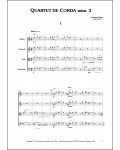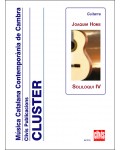
No products
Prices are tax included
Product successfully added to your shopping cart
There are 0 items in your cart. There is 1 item in your cart.
- English
- Castellano
- Català
Joaquim Homs was Born in Barcelona on 21st August 1906. He completed his secondary school and his studies in cello in 1922. Until 1929 he taught himself composition while at the same time qualifying as an engineer, a profession which he was to practise until 1971. Between 1931 to 1936 he widened his musical knowledge under the direction of Robert Gerhard, a pupil of Pedrell and Schoenberg.
Homs was drawn, from the very beginning by the necessity of solving the problem provocked by the tonality crisis. Curiously enough, he reached a solution that brought him closer to Schoenberg’s dodecaphonism. In Homs’evolution it is hard to identify great aesthetic changes, one could rather talk about a logical and coherent process in the adoption of news ideas. However, a very fine and subtle change can be observed in the pieces he composed since 1967 and 1970, where the painful period of losing his wife and his master and friend Robert Gerhard gave a nostalgic and dramatic tone to his music, hard to perceive in earlier productions. In like manner, the colouring received a touch of greater luminosity and the melodic line a greater contemplative accent.
The musical output of Joaquim Homs consists of more than two hundred and fifty instrumental and vocal works of all genres. Of these, three have been selected to represent Spain in the Festivals of the ISCM in Paris (1937), Warsaw (1939) and Stockholm (1956).
He has received many distinctions such as: Gold Medal for Artistic Merit-1981, Gold Medal for Merit in Fine Arts-1993, the Prize of Honour for Catalan Music-1994 and the National Music Prize-1992 & 1999. Since 1989 he has been Member Elect of the St. Georges Royal Catalan Academy for Fine Arts. More than eighty works have been put together on different record labels, including seven CD’s dedicated solely to his works.
He died in 2003.
(More information in www.joaquimhoms.org)
-
Duet per a flauta i guitarra
Edition: DigitalIn the Duo for flute and guitar all the melodic lines are derived from the fluctuation of intervals included within the range of minor and major thirds, melancholic in tone and which, in those moments of greatest expressive intensity, expand into wider lines and chords.
6,98 € -
-
-
-
Missa a sis veus per a cor a cappella
Edition: Digital[Purchasing this item provides you a licence to make 12 copies of it] Composed in 1943, it was first performed in the Church of Sant Ildefons, Barcelona by the choir Coral Càrmina, under the direction of Jordi Casas, on 6th May, 1985.
9,35 € -
Quartet de corda núm. 3 (1950)
Edition: DigitalTowards the end of 1949, the composer focused on composing his third string quartet, for which he went back to two musical themes, quite different one from the other, that he sketched around 1931-1932.
24,20 € -
Quartet de corda núm. 3 (1950)
Edition: PrintedTowards the end of 1949, the composer focused on composing his third string quartet, for which he went back to two musical themes, quite different one from the other, that he sketched around 1931-1932.
41,60 € -
Soliloqui IV
Edition: DigitalThe melodic willingness of the Soliloqui IV by Joaquim Homs is framed in a rhetorical approach in which imitations, mutations and derivations are used to construct a discourse in which the emotional content of the sound and its relationship with the silence takes the lead role.
6,98 € -
Soliloqui IV
Edition: PrintedThe melodic willingness of the Soliloqui IV by Joaquim Homs is framed in a rhetorical approach in which imitations, mutations and derivations are used to construct a discourse in which the emotional content of the sound and its relationship with the silence takes the lead role.
12,00 €

